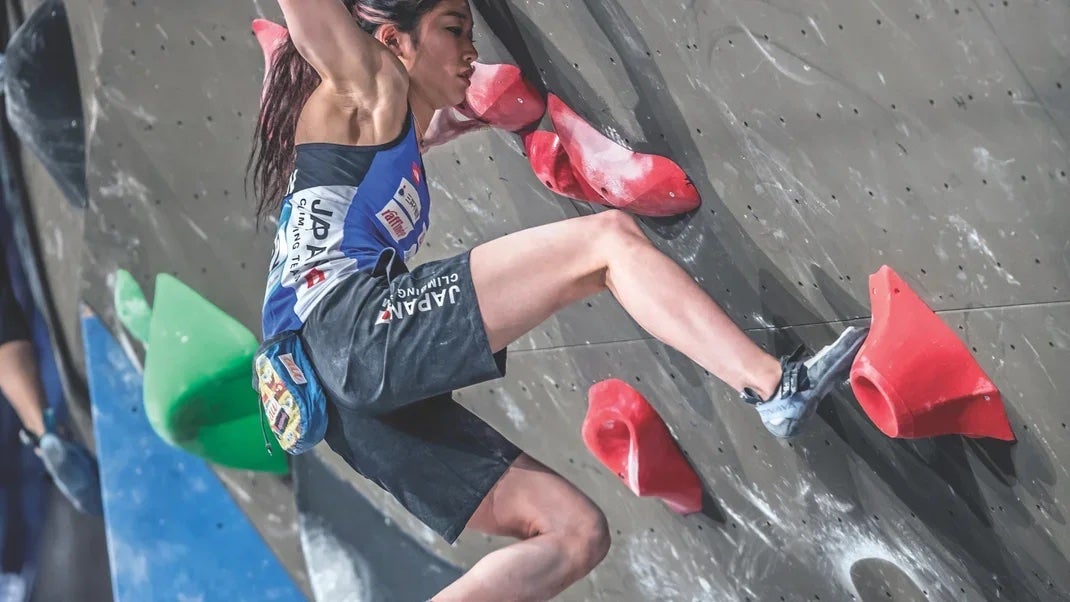Span Moves and the Very Real Risk of a Dislocated Shoulder

Shoulder dislocations usually occur without warning, but you are most at risk when your arms are spanning. Miho Nonaka crushes holds on her way to gold at the 2018 World Cup in Switzerland.
Q:
A year ago, I first dislocated my shoulder out the front and it was put back in place two hours later. I rested and rehabbed it for eight months before climbing again. Climbing was going well until June, when my shoulder dislocated again. This time it came out the back for about 10 seconds and popped back in. I could hang on a fingerboard with both arms briefly after only a few days. I had X-rays that showed a Hill Sachs lesion, likely from the first dislocation, and I was referred to a shoulder specialist. Do I need surgery? Is it possible to stabilize my shoulder without surgery?
—Blake Wardell
A:
If you swim in the ocean there is that moment when you consider what you cannot see, what flesh-ripping carnage is just moments away. It’s a flickering ember you constantly blow out for the sake of sanity. That’s how I feel about shoulder dislocations and climbing—you won’t see it coming, and it will be terrifying in its brutality.
Roughly 2 percent of the United States population will dislocate a shoulder. Of these, about 20 percent will progress to recurrent dislocations. The head of the humerus, the ball of your arm bone that fits into your shoulder socket, can dislocate in several directions depending on how it is loaded.
Anterior (frontal) dislocation is the most common (95 percent). Usually this happens when the arm is outstretched and externally rotated—imagine you have your hand raised in a stop-traffic position. That you have a Hills Sacks lesion confirms the direction of dislocation. The lesion is a small compression fracture in the head of the humerus. When the humerus pops out, the back surface impacts with the front of the glenoid rim (edge of the socket), causing the lesion on the humeral head (the ball). This is not a reason for surgery, per se. You need an MRI to shed more light on what soft-tissue damage you have suffered.
A single shoulder dislocation can produce ripped ligaments and tendons, labral tears, chondral and bone fractures, and lasting instability. That most people do not go on to recurrent dislocations is a misleading statistic in terms of how it impacts their lives. A significant number will undergo surgery and many will not return to the sport that caused the dislocation, or will reduce their activity to reduce the risk of another excruciating event.
Recurrent dislocation is a world of pain from which safe passage out would require Captain Picard and all the Marvel superheroes you can muster. Whether surgery is required really depends on the damage your shoulder sustained. That aside, addressing chronic instability is largely underpinned by more conservative rehabilitation to increase the strength and control of the shoulder. Climbing is an unforgiving sport when it comes to shoulder stability. In all likelihood, after two dislocations, you will need surgery. Recovery and rehab can take 12 to 18 months.
Note that dislocating your shoulder may produce nerve damage, as well as various types of nerve compression down the track. If your shoulder doesn’t feel right, have it looked at by a specialist.